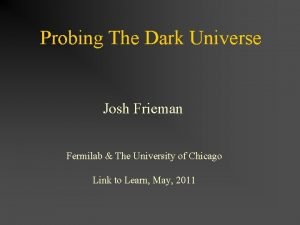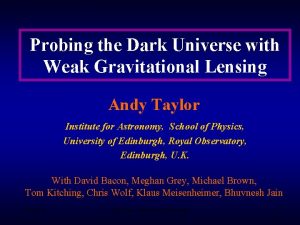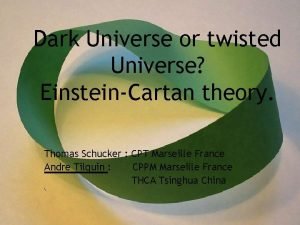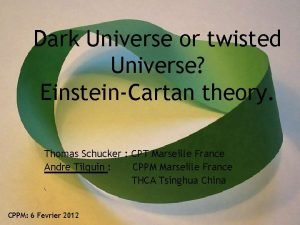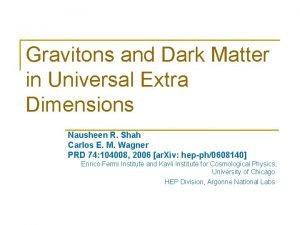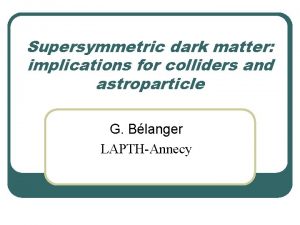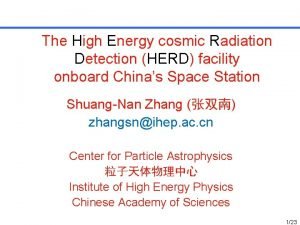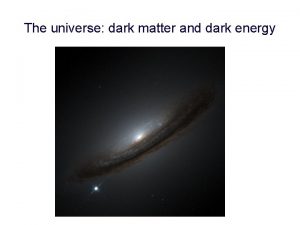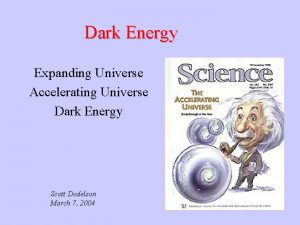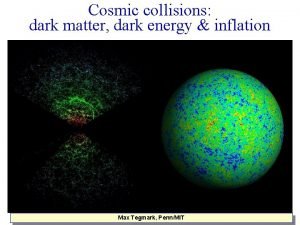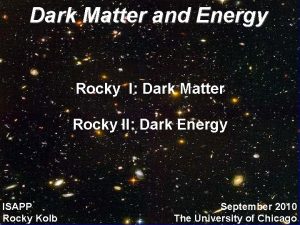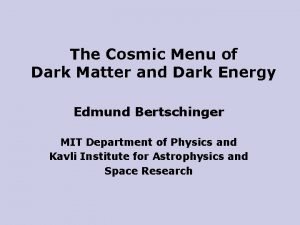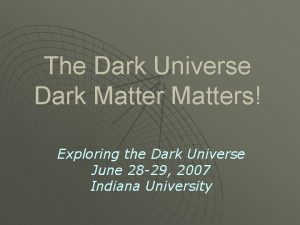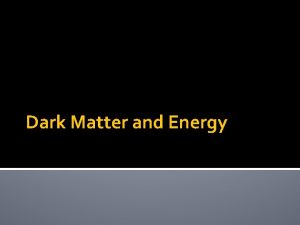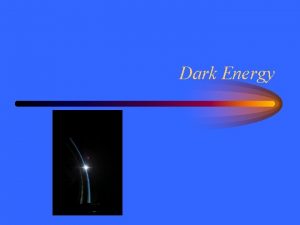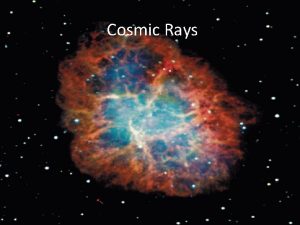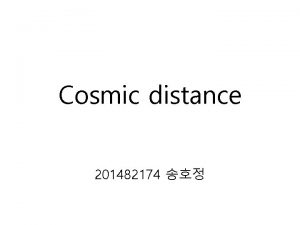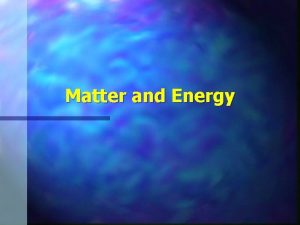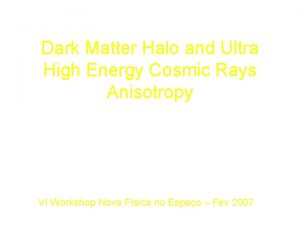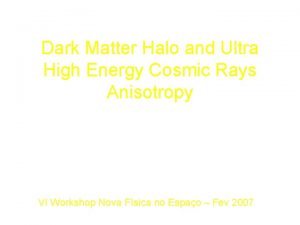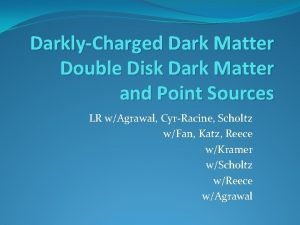The universe dark matter and dark energy Cosmic
















- Slides: 16

The universe: dark matter and dark energy

Cosmic Microwave Background was discovered in 1965 This really is a map of the sky, black zero emission, green that of a blackbody of 2. 7 K!

To see ripples in the CMB, you really have to go down in sensitivity Results from spacecraft WMAP, released on February 11, 2003

From these tiny fluctuations grew the structure we see in the universe today Clusters of galaxies, and stars

So what kind of universe do we live in? open, closed…? Recall that it depends on the mean density Via the parameter

Determining the mean density of the universe

The answer is…. • For “bright matter” omega = 2. 2 E-03 • All “baryonic matter” (from abundance of light elements), omega = 0. 02 – 0. 05 • Taking account of dark matter in clusters of galaxies, omega = 0. 33 • Best estimate is that omega < 1 • Abstract of Turner article

The truly weird feature of this is that most of the matter in the universe is not even Baryonic, and thus is of an unknown form. Taken at face value, this result indicates that omega is < 1, and we live in an open universe. This was the status a few years ago. Then things got even stranger

• For Omega =1, the fan out is the smallest • For Omega =0. 33, it is larger • For Omega = 0, it is larger still, and the maximum for a Friedmann universe

Use cosmological model to calculate m of z

What is found for Type Ia SN

The Expansion of the Universe is Accelerating • Not explicable in terms of a Friedmann universe • Behavior requires addition of “Cosmological Constant” to theory • Physically, corresponds to “Dark Energy”, an energy field the produces long range, repulsive force • Dark energy can contribute to Omega, make it 1

Contemporary “Precision” Cosmology • • • Omega of Baryonic matter = 0. 02 – 0. 05 Omega of all matter = 0. 33 Total = 1 Omega of Dark Energy = 0. 67 Age of Universe = 13. 7 Gyr Inflation occurred 1 E-34 sec after Big Bang, during which universe puffed up by factor of 1 E+25

In spite of precision, still some (very) unsatisfactory aspects • Nature of the Dark Matter unknown. When (if ever) will we confirm its existence in a laboratory? • Nature of the “Dark Energy” is completely unknown

Implications for our view of ourselves “The Realization that the majority of the matter in the universe might be non-Baryonic is the ultimate Copernican viewpoint; not only are we in no special place in the universe, but we aren’t even made out of the same stuff as dominates the matter density of the universe. ” Andrew Liddle – An Introduction to Modern Cosmology

“The Truth is out there”
 Dark matter and dark energy ppt
Dark matter and dark energy ppt Ecological succession
Ecological succession Probing the dark universe
Probing the dark universe Probing the dark universe
Probing the dark universe Twisted universe
Twisted universe Thomas dark universe
Thomas dark universe What is white matter made of
What is white matter made of What makes up the diencephalon
What makes up the diencephalon Gray matter and white matter
Gray matter and white matter What is gray matter
What is gray matter Energy energy transfer and general energy analysis
Energy energy transfer and general energy analysis Energy energy transfer and general energy analysis
Energy energy transfer and general energy analysis In the dark dark town
In the dark dark town Matter gravitons dimensions
Matter gravitons dimensions Boosted dark matter
Boosted dark matter Dark matter
Dark matter Dark matter pwo
Dark matter pwo


